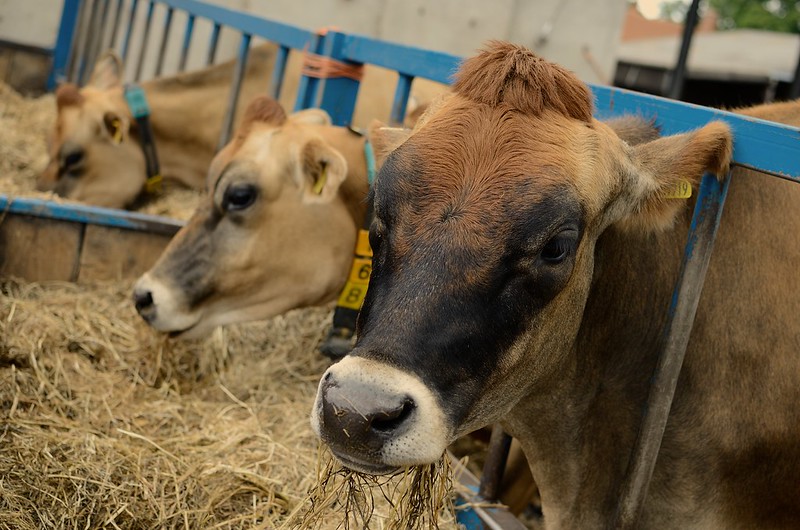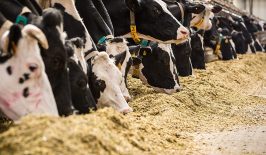For decades, cows have been causing a stink when it comes to climate change. Large scale beef and dairy production is now understood to be behind a significant portion of the world’s polluting emissions. Seven gigatonnes of pollutants is produced annually by the livestock industry, which puts it on par with those produced by vehicles. Of this figure, 40 percent comes from cows themselves – as their natural digestive system creates large amounts of methane which is then released as bovine burps or flatulence.
Various solutions have been floated to help deal with this issue, from changing their feed to creating rather bizarre fart-catching backpacks attached to the cows. Now a Norwegian firm is looking to neutralise the pollutants themselves by zapping them with artificial lightning.
The concept has been developed by N2 Applied, which has previously worked on developing new gas-reducing cow feed. Their new approach involves using a specialised ‘gun’ to fire a stream of superheated plasma into cow dung and slurry. The plasma then breaks down the bonds between molecules and results in new harmless, and even useful byproducts. Following experiments in the UK, independent assessors have calculated that the lightning plasma can reduce ammonia emissions by 90 percent, and methane – one of the most potent greenhouse gases – by up to 99 percent. All that results in relatively benign nitrogen.
But the usefulness of this new approach does not end there. Methane-belching cows might be usually found in the countryside, but their burps can make it all the way into urban areas, where they continue to impact the environment. In fact, agricultural stink can travel vast distances, including across large bodies of water.
Recent studies have suggested that these clouds of ammonia released from cow dung and slurry can then become mixed with other particulate pollutants. This is especially an issue in more built-up urban areas, where there is already a high concentration of particulates, for example from car exhausts and brakes, paints and cleaning fluids.
The World Health Organisation has recently stated that these pollutants may be even worse for health than originally thought and can lead to heart and lung disease, strokes and asthma – especially in children. Eliminating the ammonia at the source would go some way to helping clean up urban air quality.
Freshening Up Farming
The plasma contraption also has another additional benefit – it almost entirely eliminates the stink associated with livestock farming. Once zapped, the cow dung and slurry loses much of the elements which mix to create its distinctive, and not-too-fragrant aroma. A BBC journalist took the bold-step of sniffing a before and after sample of cow dung and described the plasma-treated dung as having no discernable foul odour. In fact, it had a “faintly uplifting smell of the seaside”.
Although the smell is arguably the least concerning element when it comes to the impact of cows on the environment, the stink-busting properties of the plasma might make the concept more palatable to both rural and urban dwellers. As is often the case, with these new developments, their widespread adoption will likely depend on their affordability for farmers – who are often under already severe financial strain. However, savings could potentially be made using the lightning method, as the nitrogen it produces can then be used as an effective fertiliser. Currently, price hikes in natural gas – which often forms the basis of fertiliser production – has resulted in a fertiliser shortage and costs increasing. The use of N2’s plasma concept could even provide an alternative revenue stream for farmers. In ideal cases, the N2 equipment can be hooked up to renewable energy sources, such as bioreactors, which also take advantage of cow slurry.
Of course, the environmental impact of large scale, industrial meat and dairy production does not end with ammonia and methane production. Land clearing, especially in South America, to make room for cattle ranches also directly and potently damages local ecosystems, which further exacerbates the evental methane that will be released from the cows themselves. Beef production itself is extremely resource ineffecient, as vast amounts of energy is wasted often through a cow’s life cycle.
Many nations have introduced new regulations and laws to reduce agricultural and livestock ammonia, but as is often the case, real change may only come with significant shifts in consumer attitude and behaviour.







